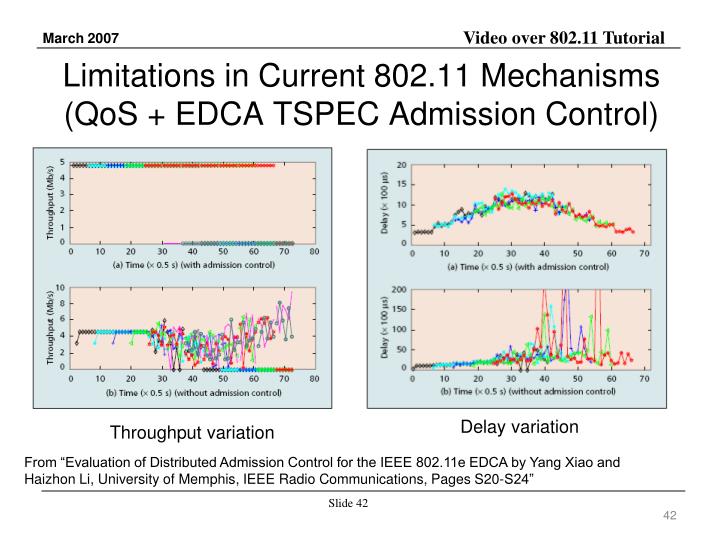

Furthermore, the simulation results show that the proposed method can yield higher system throughput than other conventional methods. The simulation results also show that the proposed method can obtain the violation rates on the target delays less than 0.1. The simulation results show that the proposed method can estimate the average delay for each queue accurately. At the last, we evaluate and show the performance of our proposed method through simulations. In this paper, we obtain the average delay for each queue and the optimal number of aggregated MPDUs for the delay requirement of each queue in IEEE 802.11ac. If many of the frames in the queue are aggregated, the frames of the queue and the other queues may violate their target delays because of a long transmission duration and a long channel occupancy. If few frames in a queue are aggregated, the frames which remain in the queue for next transmissions may violate the target delay because of the overhead for the next transmissions such as the backoff time, Physical Layer Convergence Procedure (PLCP) preamble, and PLCP header. The delay is defined as the sum of the queuing delay and the service delay. In addition, we investigate service differentiation capabilities of the IEEE 802.11p MAC sublayer.In this paper, we propose a method that estimates an average delay of frames for each queue and finds an optimal number of aggregated Medium Access Control (MAC) Protocol Data Units (MPDUs) to maximize the system throughput with satisfying the delay requirement of each queue when using the Aggregate MPDU (A-MPDU) aggregation in IEEE 802.11ac. Simulation results are given to demonstrate the accuracy of the analytical model.

The proposed model can be used for large-scale network analysis and validation of network simulators under saturated traffic conditions. Different from most of existing 3-D or 4-D Markov-chain-based analytical models for IEEE 802.11e EDCA, without computation complexity, the proposed analytical model is explicitly solvable and applies to four access categories of traffic in the IEEE 802.11p. The analytical model is suitable for both basic access and the request-to-send/clear-to-send (RTS/CTS) access mode. Features in EDCA such as different contention windows (CW) and arbitration interframe space (AIFS) for each access category (AC) and internal collisions are taken into account. This paper proposes an analytical model for the throughput of the enhanced distributed channel access (EDCA) mechanism in the IEEE 802.11p medium-access control (MAC) sublayer.


 0 kommentar(er)
0 kommentar(er)
